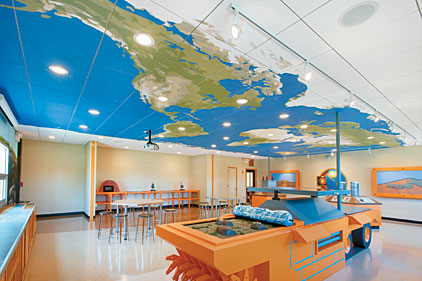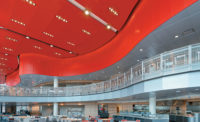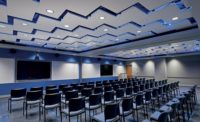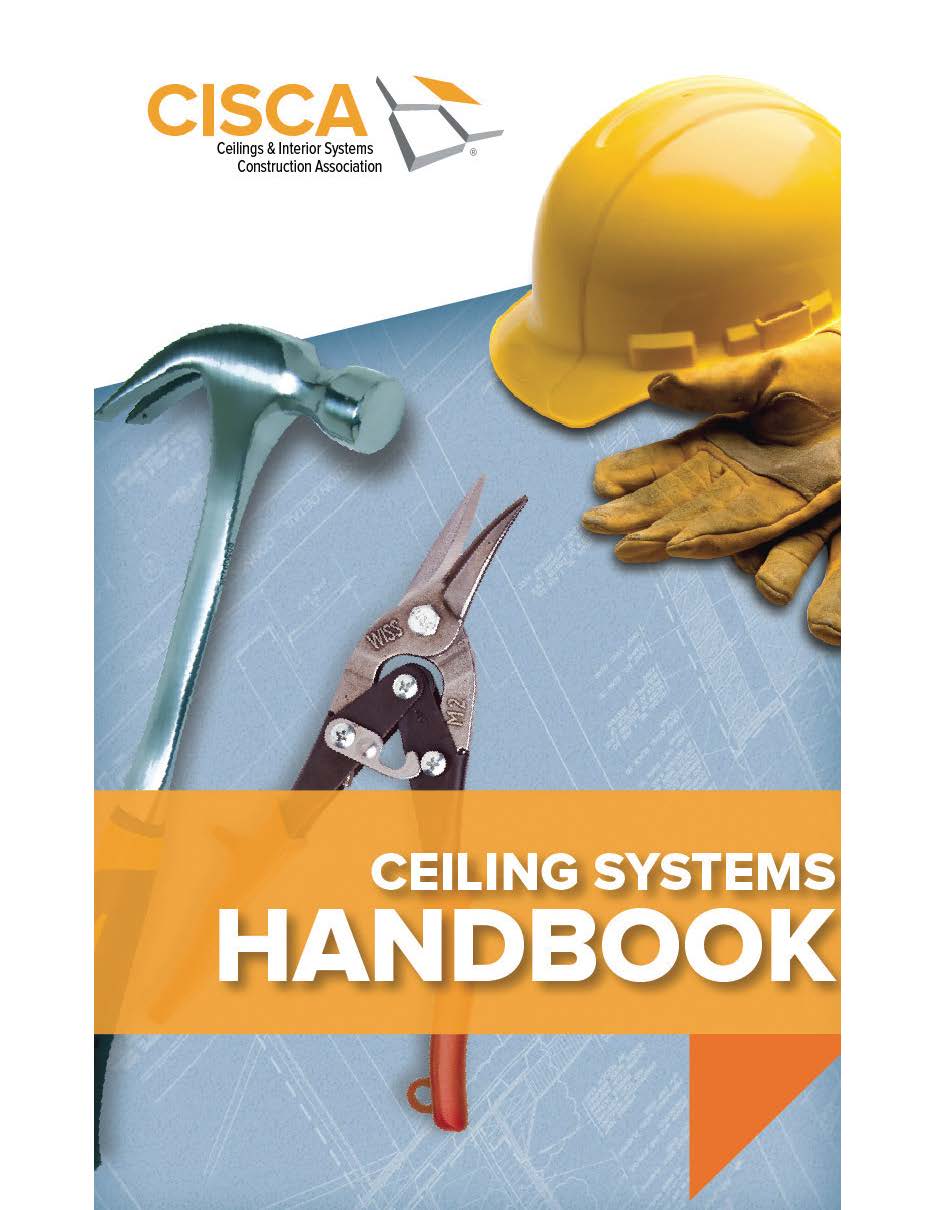Students at the Springmill Learning Center in Mansfield, Ohio have quite a different view of the world. The reason: It’s located above their heads as part of a custom acoustical ceiling that’s installed in the Center’s Earth Studies room.

|
The Springmill Learning Center is a new science and outdoor education center for fourth, fifth and sixth graders that is housed in a once-vacant elementary school. Students attend educational sessions there for a pre-determined number of days each school year depending on their grade.
Springmill teacher, Brad Strong, explains that during the planning stages for the facility, the faculty decided the Center should provide museum-quality, hands-on learning experiences for the students, all while keeping in accordance with state standards.
They also decided each room in the new Center should have a unique feature that would both function as the focal point of the space and support the educational goals.
THE WOW FACTOR
To attain both objectives, the Mansfield School District went to Splashmakers LLC, a local Mansfield firm experienced in the design of exhibits, displays and graphics for children’s spaces.
“When it comes to graphics, education today is vying with the special effects found in movies and video games,” Design Director Kevin Haring, states. “To create an educational environment that competes with this, it’s important to go beyond what a traditional classroom looks like.
“Our goal at Springmill was to create an educational environment that was engaging, exciting and on budget,” he continues. “We wanted to ‘wow’ the students as they walked in each room, while incorporating educational elements throughout every part of the room, including the ceiling.”
MAP GENERATED FROM PHOTO
The Center’s new Earth Studies Room is a good example. It features a large 24-foot-by-32-foot full color map of the world on the ceiling. It was created using Ultima Create!, a new custom design capability from Armstrong that allows designers to fashion their own one-of-a-kind ceiling art. The art can be generated from either digital artwork or imagery.
For Springmill, Haring took an existing photo of the earth, vectorized it and put it in an Adobe Illustrator file. The file was then sent to Armstrong, which transferred the image onto a series of 2-feet-by-2-feet ceiling panels.
In addition to their ability to personalize a space through the use of a unique ceiling design, the panels also provide acoustic control because they feature a Noise Reduction Coefficient of 0.70, meaning they absorb 70 percent of the sound that strikes them. In terms of sustainability, the panels have a high recycled content of 70 to 80 percent and are recyclable at the end of their service life.
FOCAL POINT OF THE ROOM
“The map is now the focal point of the room,” teacher Strong notes. “When students and adults walk in, they can’t help but look up. And, because it is so different, it offers unique opportunities to study oceans, continents and the like. It has become a great teaching tool. Compared to the way our parents were taught, it’s much more fun and exciting.”
And, the map is not the only teaching aid in the ceiling. The suspension system in which the ceiling panels are placed coordinates with actual latitude and longitude lines, while recessed lights in the panels can be turned on and off to highlight geographic features, such as continents or oceans.
ADDITIONAL CUSTOM CEILINGS
A POSSIBLITY
As far as the possibility of including custom ceilings in other spaces in the Center, Haring says he’s thinking about possibly using them in both the new History Gallery and Math Room. As far as what the ceiling graphic might be in the Math Room, he notes it could range from simple multiplication tables to common equations.
He also sees the possibility some day of using the custom capability to create a mural on a wall and then have it wrap onto the ceiling, creating an immersion type of environment.
“In short, we want to break the boundaries of what people usually think a classroom should look like,” Haring concludes. “We hope other school systems will see what was accomplished at Springmill and get excited about implementing environments like it.” W&C








